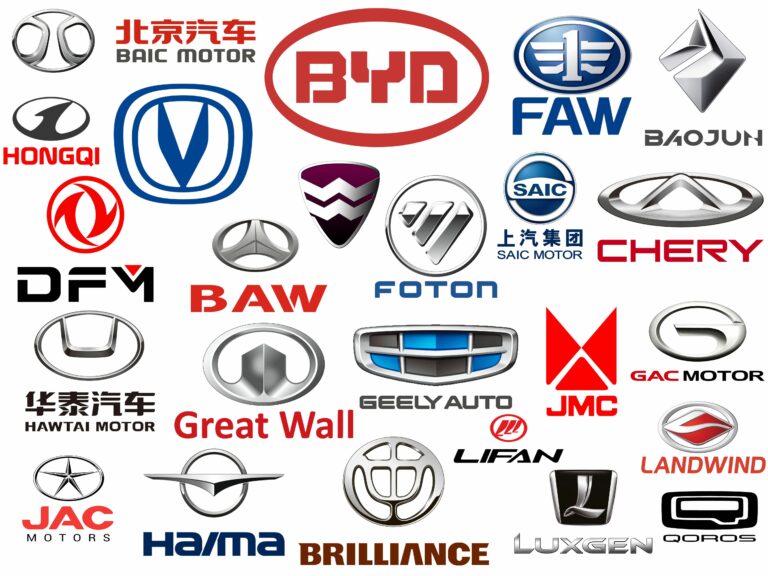Car Brand Acronym: Unpacking the Letters Behind Automotive Legends
Car Brand Acronym: Unpacking the Letters Behind Automotive Legends cars.truckstrend.com
In the vast and dynamic world of automobiles, where innovation meets tradition and engineering prowess intertwines with aspirational design, brand names are more than just labels; they are powerful identifiers. While many iconic car manufacturers bear the names of their founders – Ford, Ferrari, Porsche – a significant number are known, often exclusively, by a specific type of nomenclature: the car brand acronym. These condensed linguistic forms, whether initialisms or true acronyms, are not merely shortcuts; they are deeply embedded in the identity, history, and global recognition of some of the most prominent automotive giants.
Understanding car brand acronyms is akin to peeling back layers of history, technology, and corporate strategy. They serve as concise, memorable, and often globally pronounceable representations of complex corporate structures, historical unions, or the very essence of a brand’s philosophy. From the precision of German engineering to the reliability of Japanese manufacturing, these letters encapsulate narratives, making them a crucial, albeit often overlooked, aspect of automotive literacy. This article will delve into the fascinating world of car brand acronyms, exploring their purpose, evolution, and the rich stories they tell.
Car Brand Acronym: Unpacking the Letters Behind Automotive Legends
The Power of Conciseness: Why Acronyms Rule the Road
Why do so many major car brands opt for acronyms? The reasons are multifaceted and deeply rooted in both practical and strategic considerations:
- Memorability and Recall: Long, multi-word corporate names can be cumbersome and difficult to remember, especially across diverse linguistic backgrounds. Acronyms offer a succinct, easily digestible alternative that sticks in the mind. BMW is far easier to recall and pronounce globally than "Bayerische Motoren Werke AG."
- Global Recognition and Pronunciation: A key challenge for international brands is ensuring their name is pronounceable and recognizable in countless languages. Acronyms, particularly initialisms, often consist of letters that have consistent sounds or are simply pronounced as individual letters (B-M-W, F-I-A-T), transcending linguistic barriers more effectively than full names.
- Professionalism and Modernity: Acronyms can lend an air of sophistication and corporate efficiency. They suggest a well-established entity that has streamlined its identity, projecting an image of stability and modernity.
- Space and Branding Efficiency: In an age of digital media, small logos, and quick glances, shorter names are invaluable. Acronyms fit neatly into compact spaces on vehicle badging, advertising, and digital interfaces, maximizing brand impact with minimal real estate.
- Historical Evolution and Corporate Mergers: Many acronyms originated from mergers, acquisitions, or the evolution of founding companies. They serve as a concise way to represent a complex corporate lineage without listing every component. For instance, Audi’s name is a direct result of the Auto Union.

In essence, car brand acronyms are powerful branding tools that streamline communication, enhance memorability, and foster a consistent global identity in a highly competitive market.
Decoding the Initials: Types and Formation of Car Brand Acronyms
While often used interchangeably, "acronym" and "initialism" have distinct definitions, though in common parlance, "acronym" often covers both. Understanding this distinction can offer insight into a brand’s chosen identity:
- Initialisms: These are abbreviations formed from the initial letters of other words, where each letter is pronounced individually. Most car brand acronyms fall into this category. Examples include:
- BMW: Bayerische Motoren Werke (Bavarian Motor Works)
- FIAT: Fabbrica Italiana Automobili Torino (Italian Automobile Factory of Turin)
- GM: General Motors
- VW: Volkswagen (though usually referred to by its full name, its logo and common usage often lean on the "VW" initialism)
- True Acronyms: These are abbreviations formed from the initial letters of other words and are pronounced as a word. While less common in car brand names themselves, they might appear in internal divisions or technologies. For instance, some might refer to "Saab" (Svenska Aeroplan Aktiebolaget) as a true acronym, though it’s often pronounced as a single word rather than individual letters. Another example is RAM (for Random Access Memory but in vehicles, it’s a brand name that stands alone).
The formation often reflects:
- Geographic Origin: Like FIAT (Torino) or BMW (Bavarian).
- Founding Principles/Purpose: Volkswagen (People’s Car).
- Corporate Structure: General Motors, referring to a conglomerate of various automotive enterprises.
- Historical Legacy: Names that carried over from previous entities or mergers.
A Journey Through Automotive History: Notable Car Brand Acronyms
The automotive landscape is dotted with brands whose names are, in fact, acronyms, each carrying a rich historical narrative:
- BMW (Bayerische Motoren Werke – Bavarian Motor Works): Founded in 1916, BMW initially produced aircraft engines, then motorcycles, before venturing into automobiles. Its name clearly states its regional origin and its initial focus on engines.
- FIAT (Fabbrica Italiana Automobili Torino – Italian Automobile Factory of Turin): Established in 1899, FIAT’s name directly translates its purpose and its home city, Turin, a hub of Italian industry.
- Audi (Auto Union Deutschland Ingolstadt): While "Audi" itself is Latin for "hear" or "listen" (a translation of founder August Horch’s surname), the company’s modern identity is rooted in the "Auto Union" formed in 1932 by the merger of four struggling German automakers: Audi, DKW, Horch, and Wanderer. The four rings of the Audi logo symbolize this union. "Auto Union Deutschland Ingolstadt" would be a more complete, though less common, expansion of its modern context.
- GM (General Motors): Founded in 1908 by William C. Durant, GM was conceived as a holding company for various automotive interests, including Buick, Oldsmobile, and later Chevrolet and Cadillac. Its name perfectly encapsulates its broad, encompassing nature.
- VW (Volkswagen – People’s Car): Commissioned by Adolf Hitler in the 1930s, the "people’s car" project aimed to produce affordable vehicles for the masses. The name directly reflects this original mission.
- BYD (Build Your Dreams): A prominent Chinese automaker founded in 1995, BYD’s full name is a motivational and aspirational phrase, rather than a description of its origins or location, highlighting a modern trend in branding.
- SAAB (Svenska Aeroplan Aktiebolaget – Swedish Aeroplane Limited Company): Like BMW, SAAB started as an aircraft manufacturer in 1937 before diversifying into automobiles. Its name is a direct link to its aeronautical heritage.
These examples illustrate how acronyms encapsulate the core identity, historical context, and often the strategic intent behind a car brand.
Beyond the Letters: Branding, Identity, and Market Perception
An acronym’s power extends far beyond its literal meaning. Over time, these condensed names become deeply ingrained in public consciousness, evolving into symbols of quality, luxury, performance, or reliability.
- Brand Equity: Brands like BMW and Mercedes-Benz (often referred to by their full names but whose three-pointed star and roundel are universally recognized) have built immense brand equity around their identities. The acronyms become synonymous with specific attributes – precision engineering, driving pleasure, luxury, and prestige.
- Market Positioning: The choice of an acronym or a full name can influence market positioning. A short, impactful acronym can project a modern, efficient image, while a full, founder-based name might evoke tradition and heritage.
- Evolution of Meaning: While an acronym might start with a literal meaning, its perceived meaning evolves with the brand’s success and reputation. FIAT is no longer just "Italian Automobile Factory of Turin"; it represents Italian design, compact cars, and a rich racing history.
- Challenge of New Acronyms: For newer brands, creating an impactful acronym can be challenging. It needs to be unique, memorable, and preferably, easy to pronounce globally, without sounding generic or similar to existing brands. This is why many new brands opt for invented words or evocative single names rather than traditional acronyms.
Challenges and Misinterpretations
Despite their benefits, car brand acronyms can pose challenges:
- Loss of Original Meaning: As brands grow and diversify, the original meaning of their acronyms might become obscure to the general public. Few everyday drivers know the full meaning of BMW or FIAT. While this doesn’t hinder brand recognition, it means some of the historical context is lost.
- Pronunciation Difficulties: While initialisms are often designed for global pronunciation, some letter combinations can still be tricky in certain languages.
- Cultural Context: An acronym might have an unintended or negative connotation in a specific language or culture, requiring careful market research.
- Generic Sound: Some acronyms, especially if they are very common initialisms, might lack distinctiveness unless paired with strong branding and product identity.
Solutions involve consistent branding, clear marketing messages, and sometimes, a deliberate decision to let the acronym stand on its own, detached from its literal origins, allowing the brand’s products and reputation to define its meaning.
Tips for Understanding and Remembering Car Brand Acronyms
For car enthusiasts, industry professionals, or anyone simply curious, understanding these acronyms can deepen appreciation for automotive history:
- Contextual Learning: When encountering a new car brand acronym, try to find out its full meaning and the historical context of its formation. This adds depth to your understanding.
- Group by Origin: Many acronyms relate to the brand’s country of origin (e.g., German, Italian, Swedish). Grouping them this way can help with recall.
- Utilize Mnemonics (if applicable): While not always straightforward for initialisms, sometimes creating a memorable phrase for the letters can help.
- Focus on the Brand Identity: Even if you forget the full name, understanding what the acronym represents (e.g., luxury, reliability, performance) is key to automotive literacy.
- Embrace the Evolution: Recognize that while the letters are static, the brand’s meaning and perception behind them are constantly evolving with its products and market presence.
Common Car Brand Acronyms and Their Meanings
Below is a table providing a comprehensive look at some of the most prominent car brand acronyms, their full meanings, and notable aspects.
| Acronym | Full Name / Origin | Significance / Notes |
|---|---|---|
| BMW | Bayerische Motoren Werke (Bavarian Motor Works) | German manufacturer of luxury vehicles and motorcycles. Started with aircraft engines, then motorcycles, and finally cars. "Bavarian" highlights its origin in Bavaria, Germany. |
| FIAT | Fabbrica Italiana Automobili Torino (Italian Automobile Factory of Turin) | One of Italy’s largest car manufacturers, founded in 1899. The name clearly states its function and city of origin. Part of Stellantis group today. |
| GM | General Motors | American multinational automotive manufacturing corporation. Founded in 1908, it’s a conglomerate of various automotive brands (Chevrolet, Cadillac, GMC, Buick, etc.), hence "General Motors." |
| VW | Volkswagen (German for "People’s Car") | German automaker founded in 1937. Its name directly reflects its original mission to produce affordable cars for the masses. |
| BYD | Build Your Dreams | Chinese multinational manufacturing company, founded in 1995. Known for electric vehicles and batteries. Its full name is an aspirational motto, a modern branding approach. |
| SAAB | Svenska Aeroplan Aktiebolaget (Swedish Aeroplane Limited Company) | Swedish company, originally an aircraft manufacturer (founded 1937) that later diversified into cars. The car division eventually ceased production, but its name is a direct link to its aeronautical heritage. |
| SEAT | Sociedad Española de Automóviles de Turismo (Spanish Society of Passenger Cars) | Spanish automaker, founded in 1950 by the Spanish government. Its name describes its function and national origin. Now part of the Volkswagen Group. |
| SsangYong | Korean for "Twin Dragons" | While not an acronym of individual letters, it’s a name composed of two Korean words that translate to "Twin Dragons," reflecting a cultural and symbolic origin for the brand, rather than an initialism. |
| LADA | AvtoVAZ (АвтоВАЗ) | LADA is the brand name used by AvtoVAZ, a Russian automaker. While LADA isn’t an acronym of AvtoVAZ, the company itself is often referred to by its initialism. LADA is derived from the name of a type of small boat (laden with goods) used on the Volga River, near the factory. |
| Daihatsu | Hatsudoki Seizo (Engine Manufacturing) | While "Daihatsu" is a blend of "Dai" (from Osaka, where it was founded) and "Hatsudoki Seizo," the latter part is often associated with its original name. Not a strict acronym, but a portmanteau referencing its origin and purpose. |
Note on "Price Table": It is important to clarify that "Car Brand Acronym" is a concept, a linguistic phenomenon, and therefore does not have a "price." The table above provides "complete information" in terms of the acronyms’ meanings, origins, and significance, which is the true "value" of understanding them.
Frequently Asked Questions (FAQ) about Car Brand Acronyms
Q1: What is the difference between an acronym and an initialism?
A1: An initialism is an abbreviation formed from the initial letters of other words, where each letter is pronounced individually (e.g., BMW, GM). An acronym is also formed from initial letters but is pronounced as a word (e.g., NATO, NASA). Most car brand "acronyms" are technically initialisms.
Q2: Are all major car brands acronyms?
A2: No, many major car brands are named after their founders (e.g., Ford, Ferrari, Porsche, Honda, Toyota) or are evocative single words (e.g., Mazda, Nissan, Subaru). However, a significant number of globally recognized brands do use acronyms.
Q3: Why do some car brands use acronyms while others use full names?
A3: The choice depends on historical context, branding strategy, and target audience. Acronyms offer conciseness and global pronunciation benefits, often arising from corporate mergers or initial descriptive names. Founder-named brands emphasize heritage and personal legacy.
Q4: Do car brand acronyms ever change?
A4: While the acronym itself rarely changes (e.g., BMW is always BMW), the full name it represents might evolve due to corporate restructuring or mergers. The public perception and meaning associated with the acronym also evolve over time with the brand’s products and reputation.
Q5: How do new car brands choose their names, especially if they are acronyms?
A5: New brands carefully consider factors like uniqueness, memorability, global pronounceability, and the connotations the name evokes. If opting for an acronym, they often choose letters that represent their mission, technology, or simply sound distinct and modern. Many modern brands opt for invented words or single, evocative names for better distinctiveness in a crowded market.
Q6: Is there a "best" type of car brand name – acronym or full name?
A6: There isn’t a "best" type; effectiveness depends on the brand’s overall strategy. Both can be highly successful. The key is strong branding, consistent quality, and effective marketing that makes the chosen name resonate with consumers.
Conclusion: More Than Just Letters
Car brand acronyms are more than mere linguistic abbreviations; they are condensed narratives of innovation, industry, and identity. From the "Bavarian Motor Works" to the "People’s Car," these letters encapsulate the historical foundations, strategic ambitions, and global reach of the automotive giants they represent. They demonstrate the power of conciseness in branding, enabling immediate recognition and recall across diverse cultures and languages. While their full meanings may sometimes fade from public consciousness, the acronyms themselves remain potent symbols, instantly evoking images of specific vehicles, engineering philosophies, and driving experiences. Understanding these acronyms offers a deeper appreciation for the rich tapestry of the automotive world, reminding us that even the shortest names often carry the longest stories.





